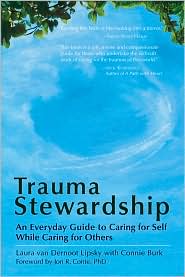
As a psychological counselor in training, one of the things that I have to be very aware of is the long-term effects of exposure to trauma in my clients. Vicarious traumatization, secondary trauma, compassion fatigue and other terms have been applied to this phenomenon in which we who have not been directly exposed to traumatic events nonetheless feel the effects when working with those who have.
The author of this work sets out a detailed understanding, for both the professional and the layperson, of what trauma is and what its symptoms are. This is especially important as trauma’s effects can be quite insidious, and I remember being shocked while reading this even though I had encountered the ideas in textbooks.
There’s also a wealth of material in how to overcome secondary trauma. A lot of it deals with awareness and being in the moment, which are much more difficult than they sound, especially in a culture and society full of distractions. However, it’s not just reflection. There are also ways to apply new ways of approaching one’s work to avoid further traumatization and to be more effective in aiding others.
One of the most valuable things about this book is that it’s written for a wider audience than just psychological professionals. Everyone from activists to volunteers can find much to use in this book, and it’s written in a very down-to-earth, accessible style. This makes it incredibly versatile, and opens it up to people who might find more technical guides to be too unapproachable.
This is staying on my reference shelf, and will be an invaluable resource once I begin to practice counseling. Even if I don’t do much work with heavily traumatized clients, the information here will come in handy for helping to avoid general burnout and other hazards of the profession.
~review by Lupa
Author: Laura van Dernoot Lipsky with Connie Burk
Berret-Koehler Publishers, Inc., 2009
pp. 264, $19.95